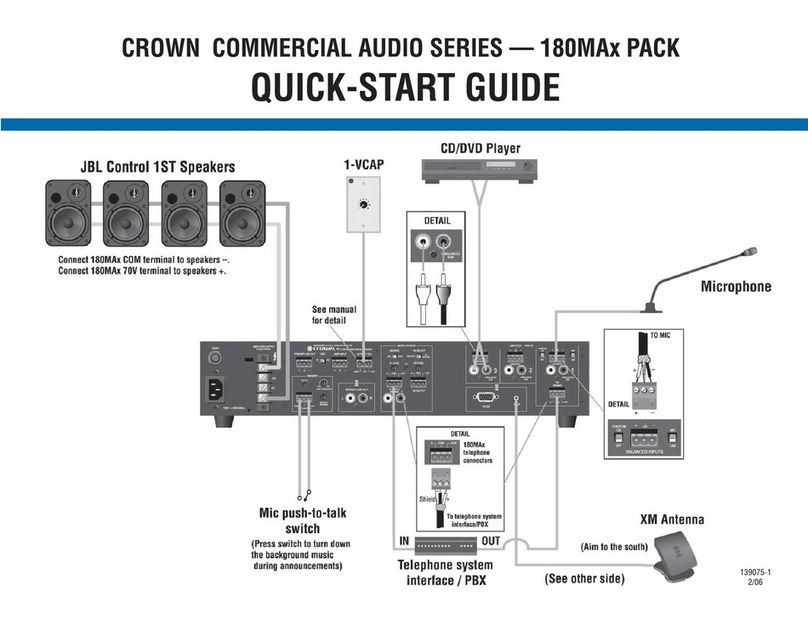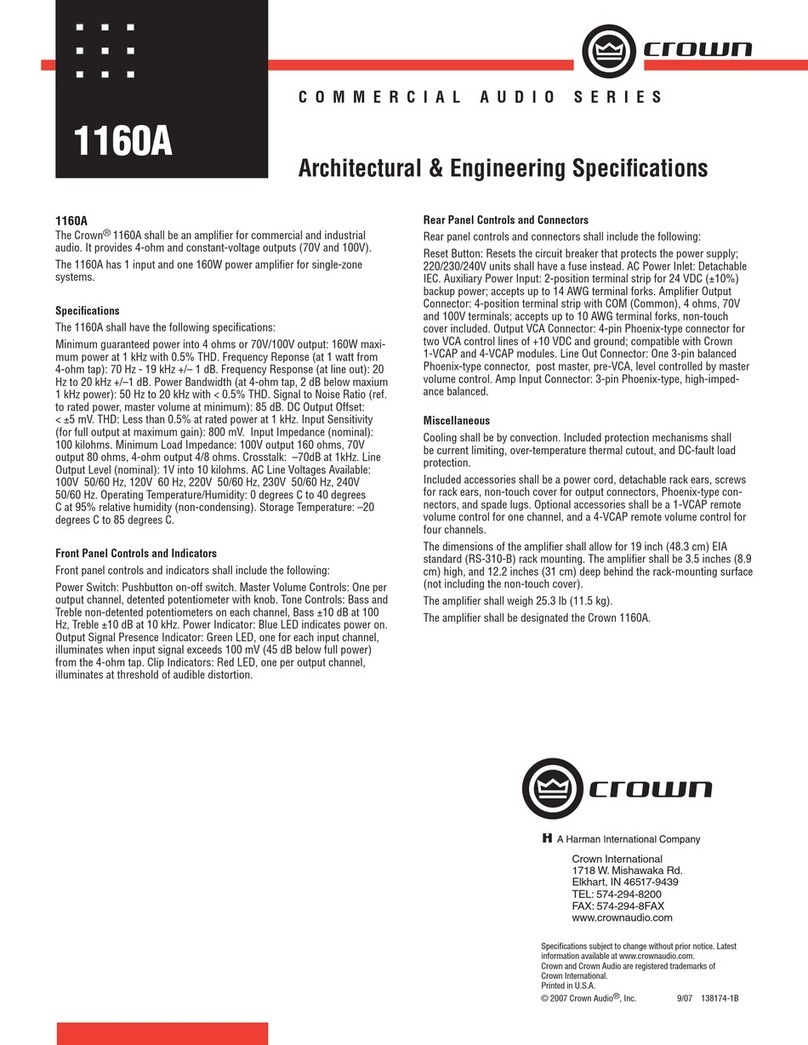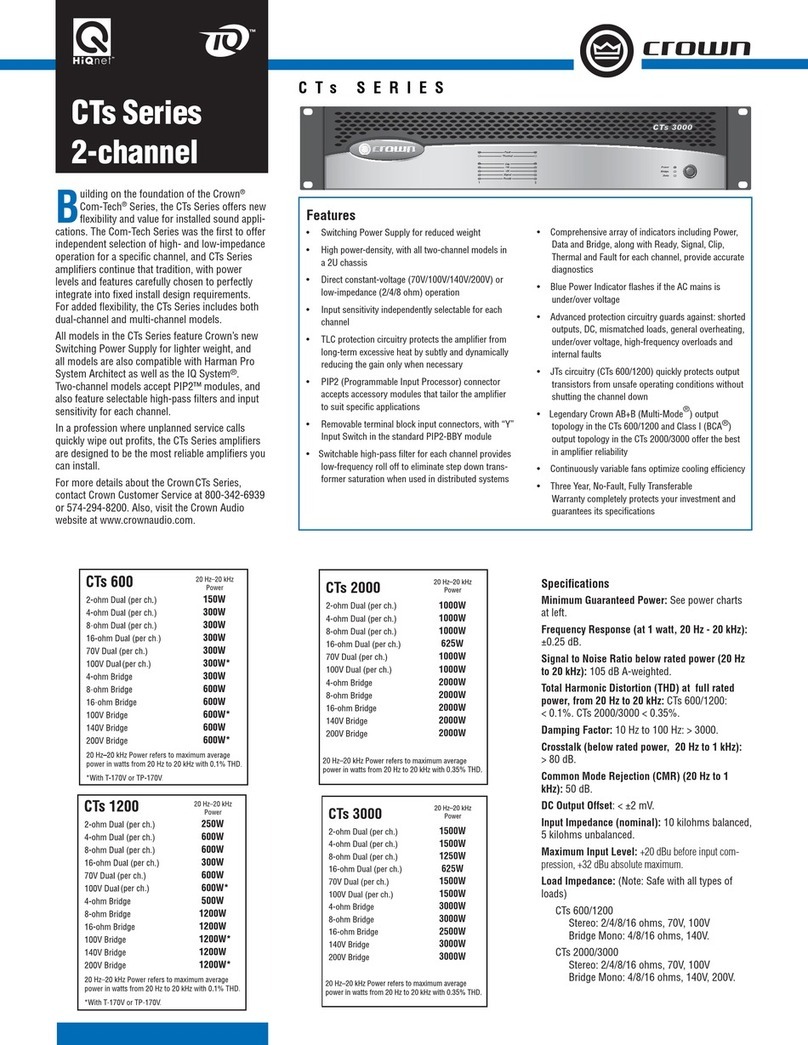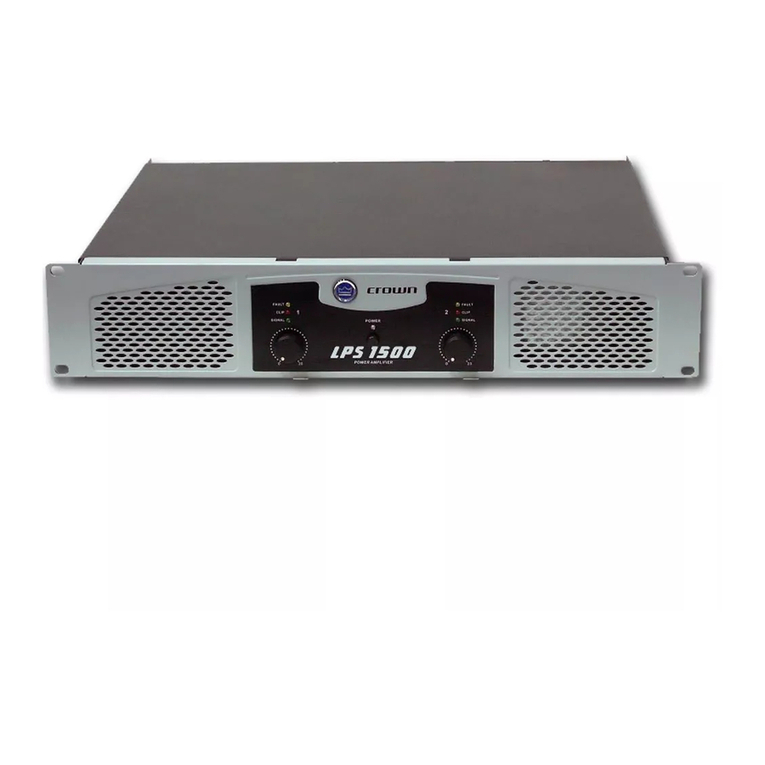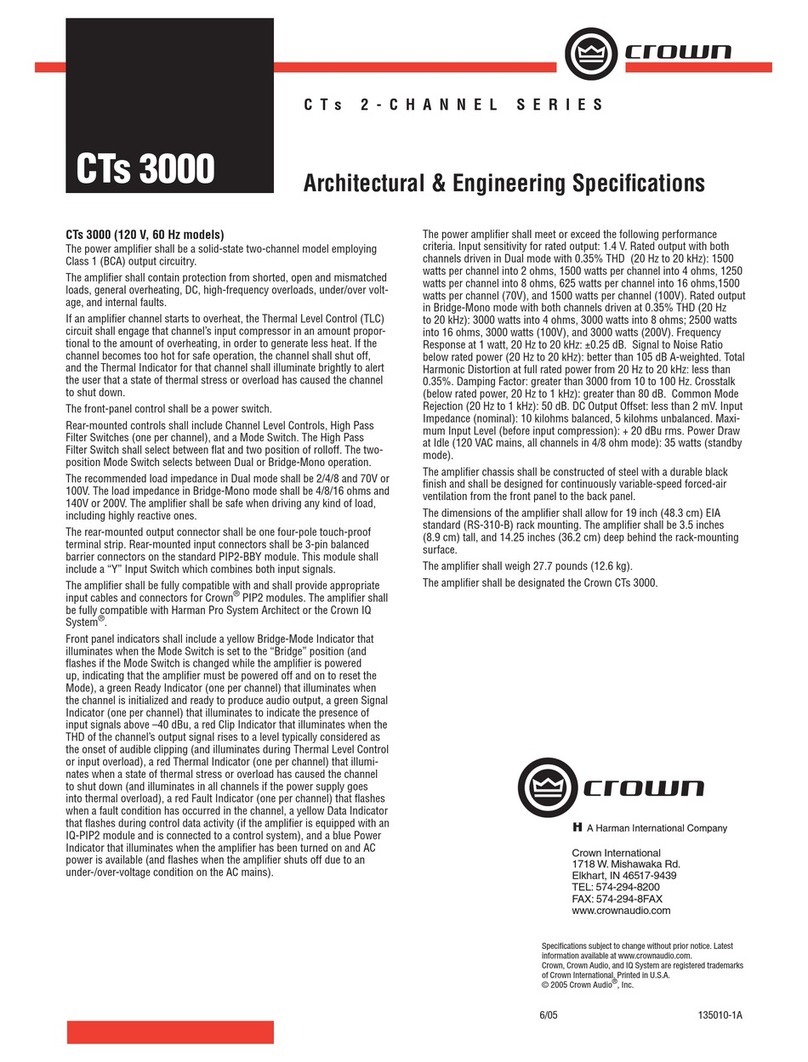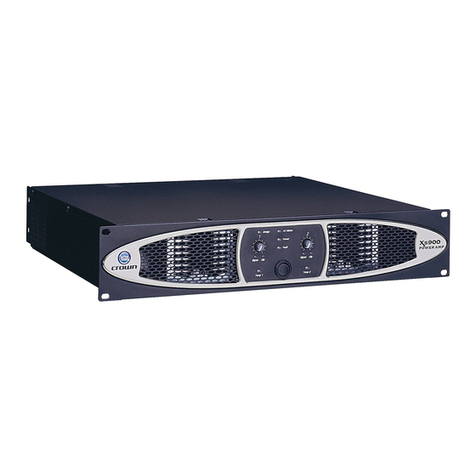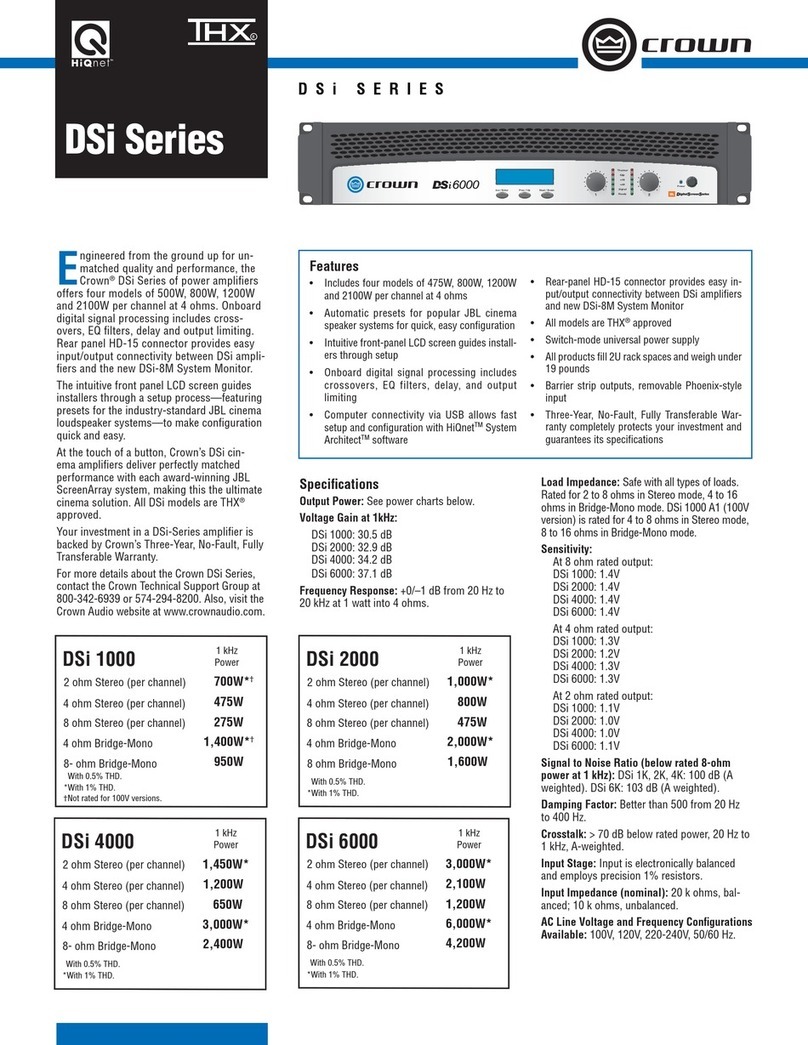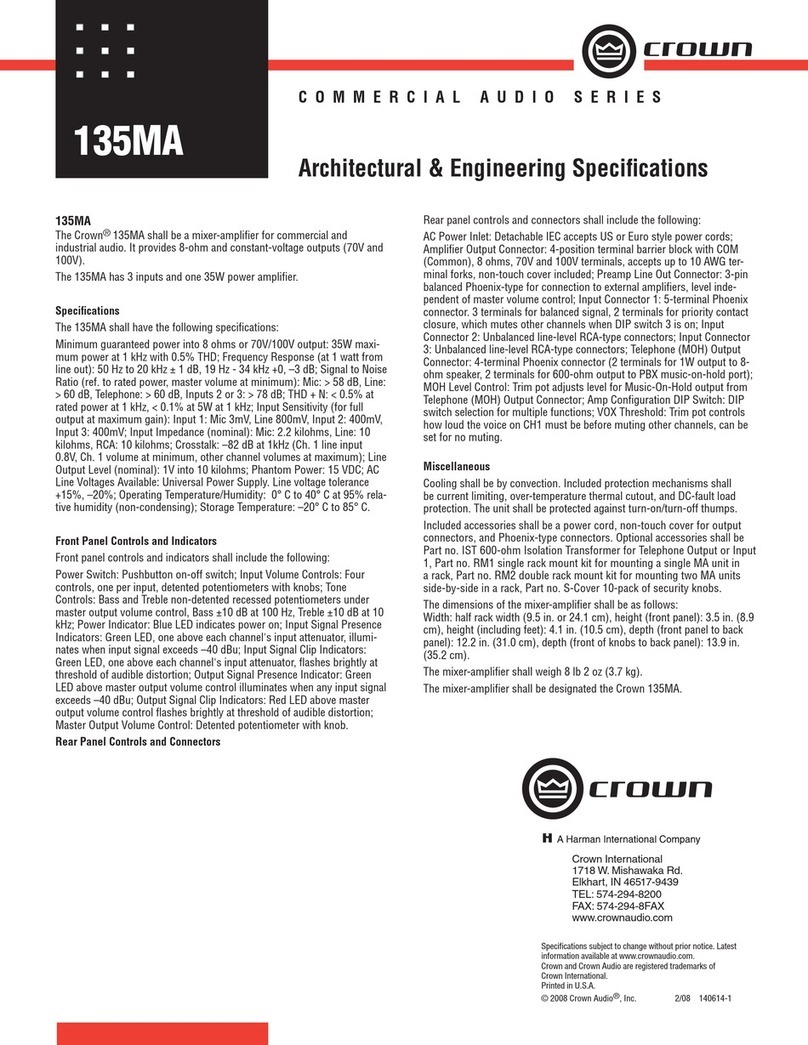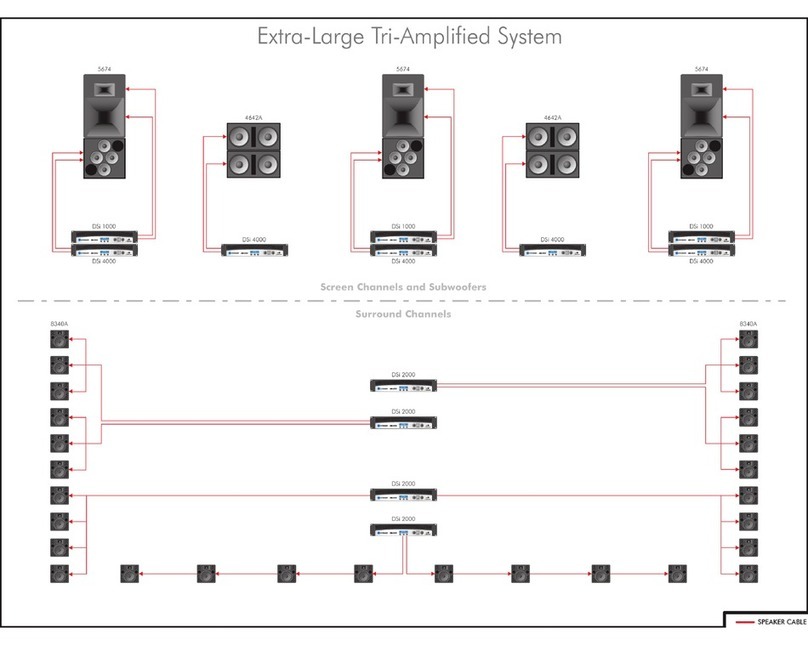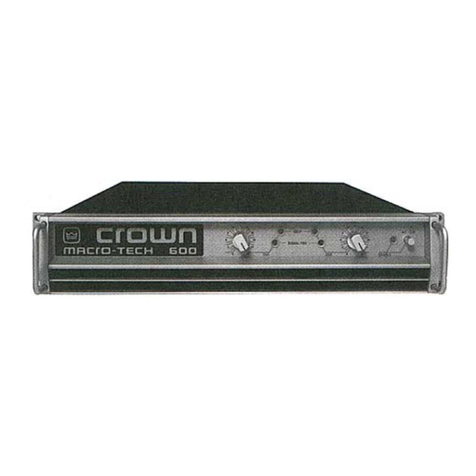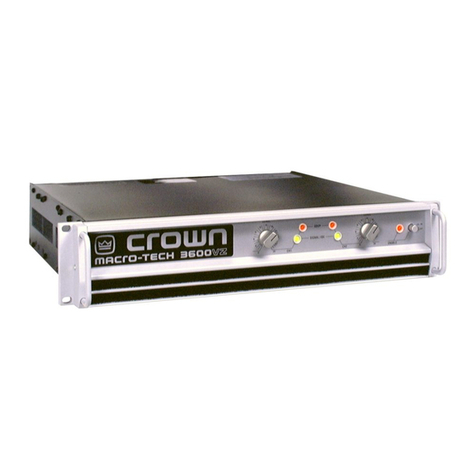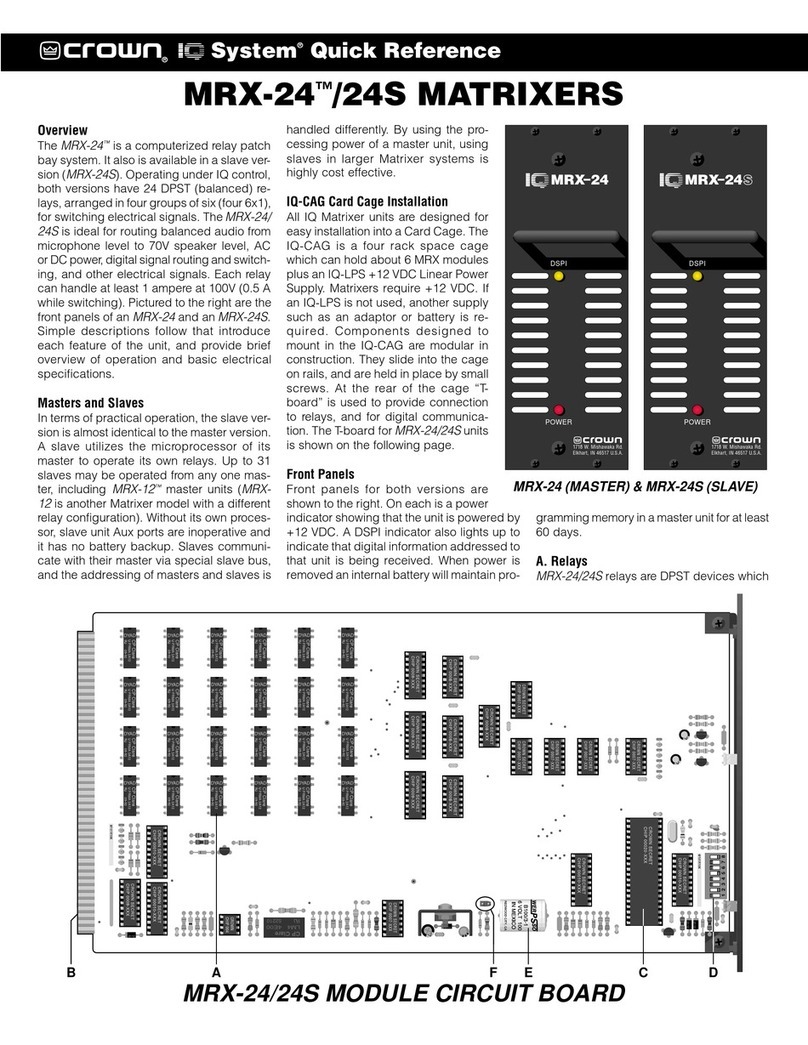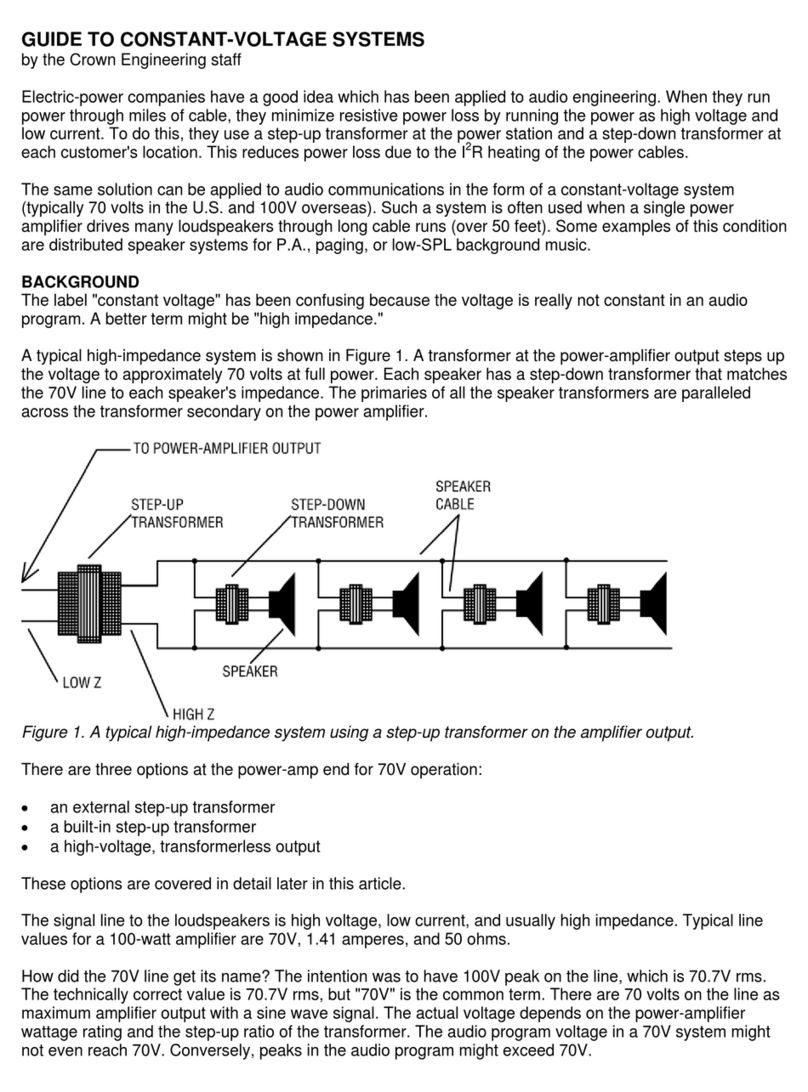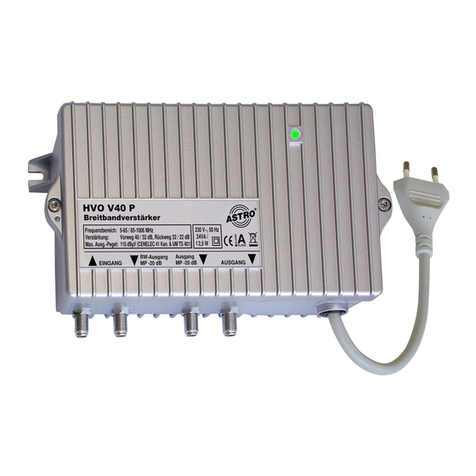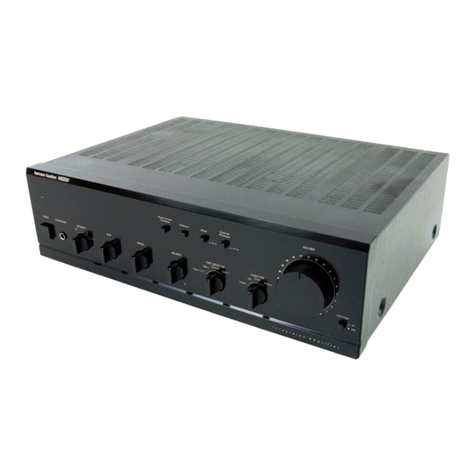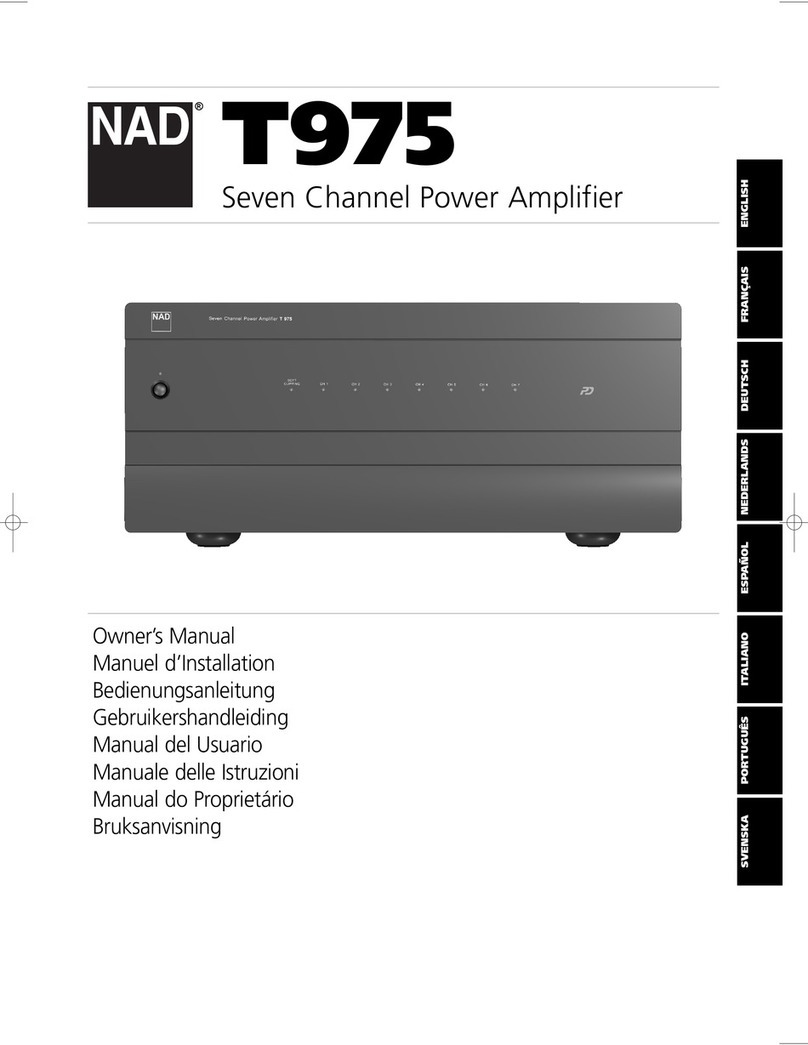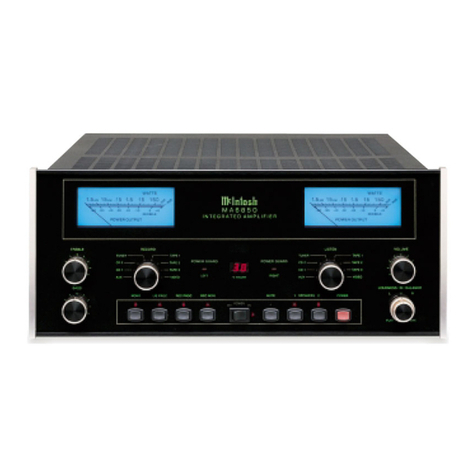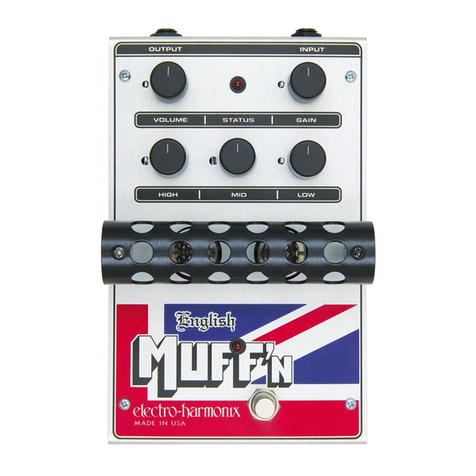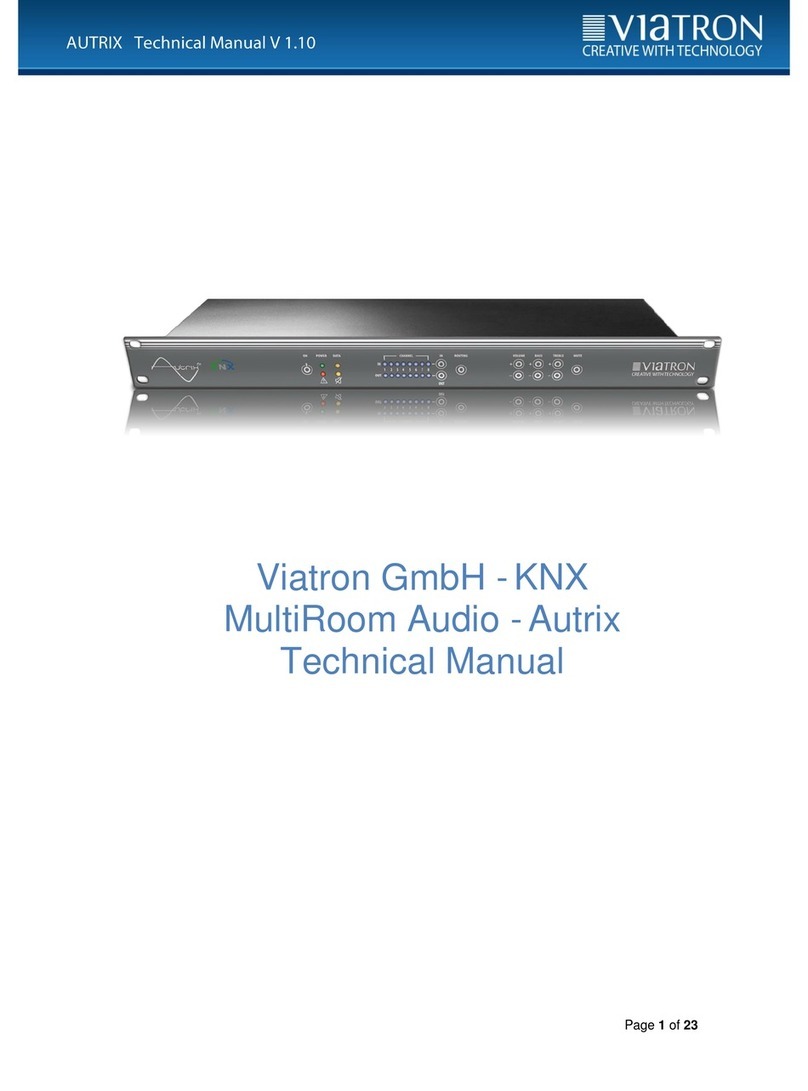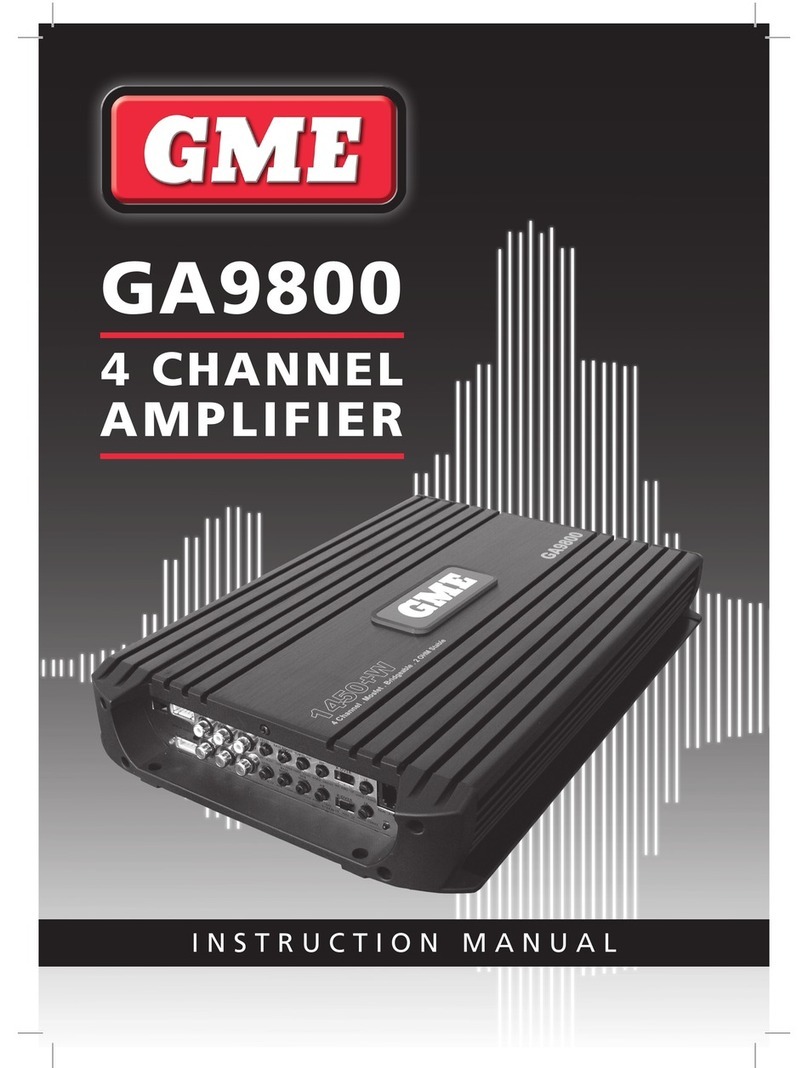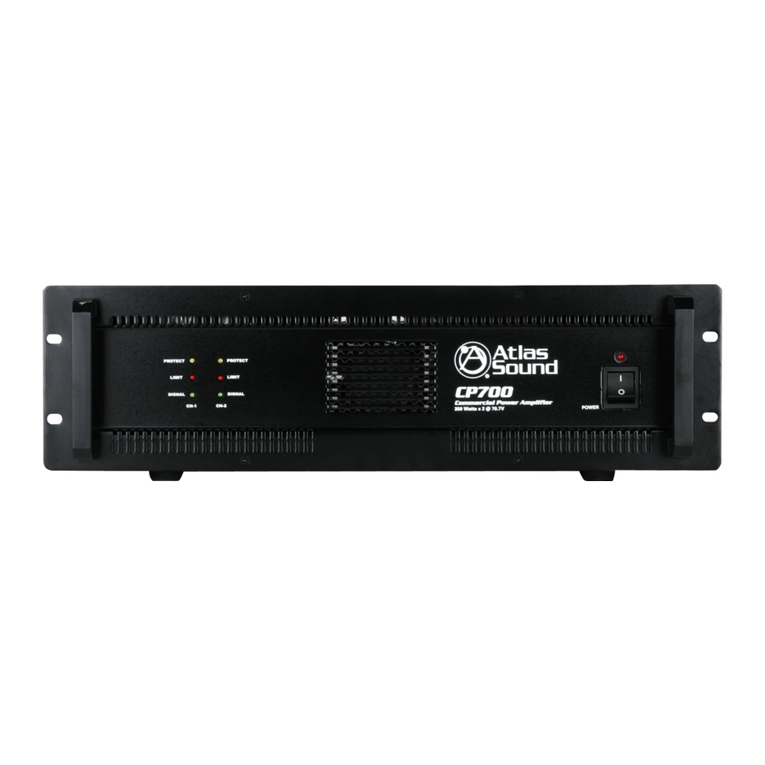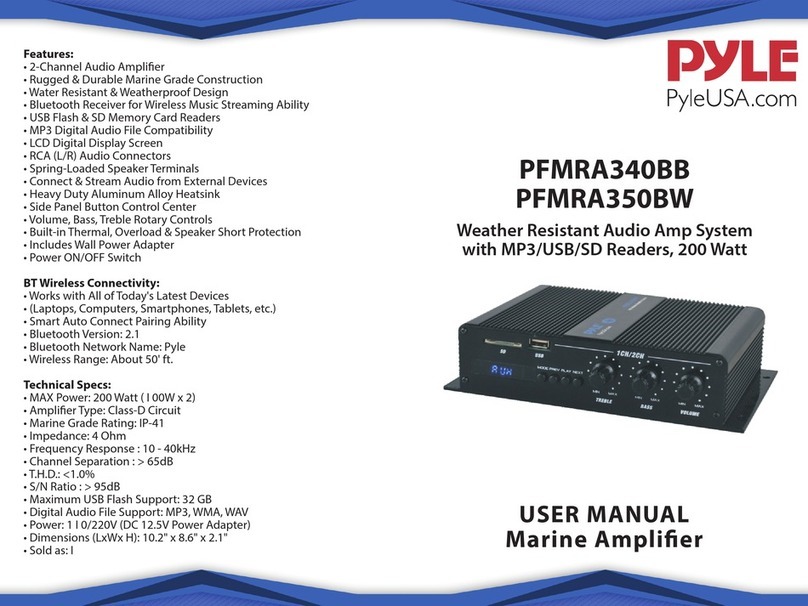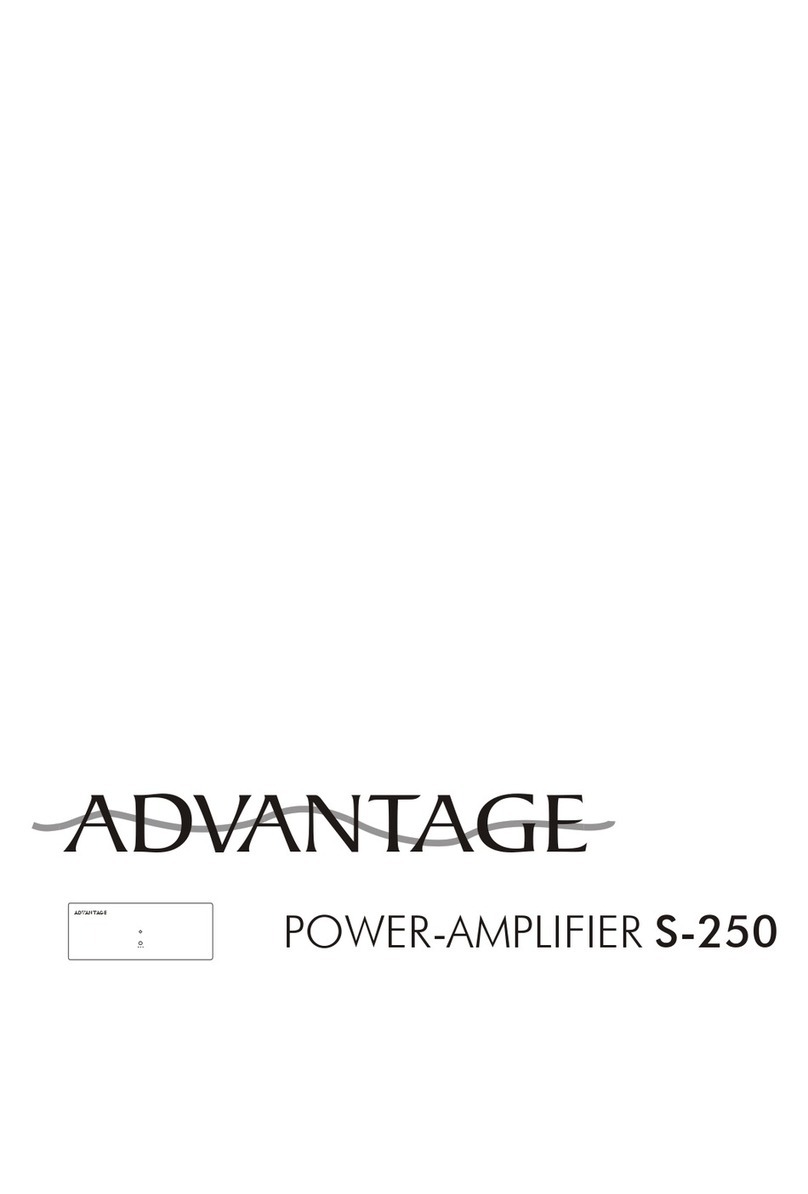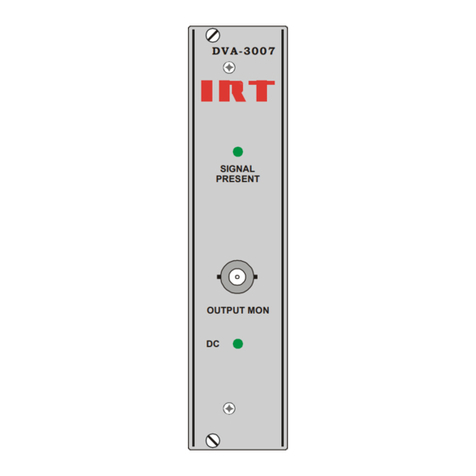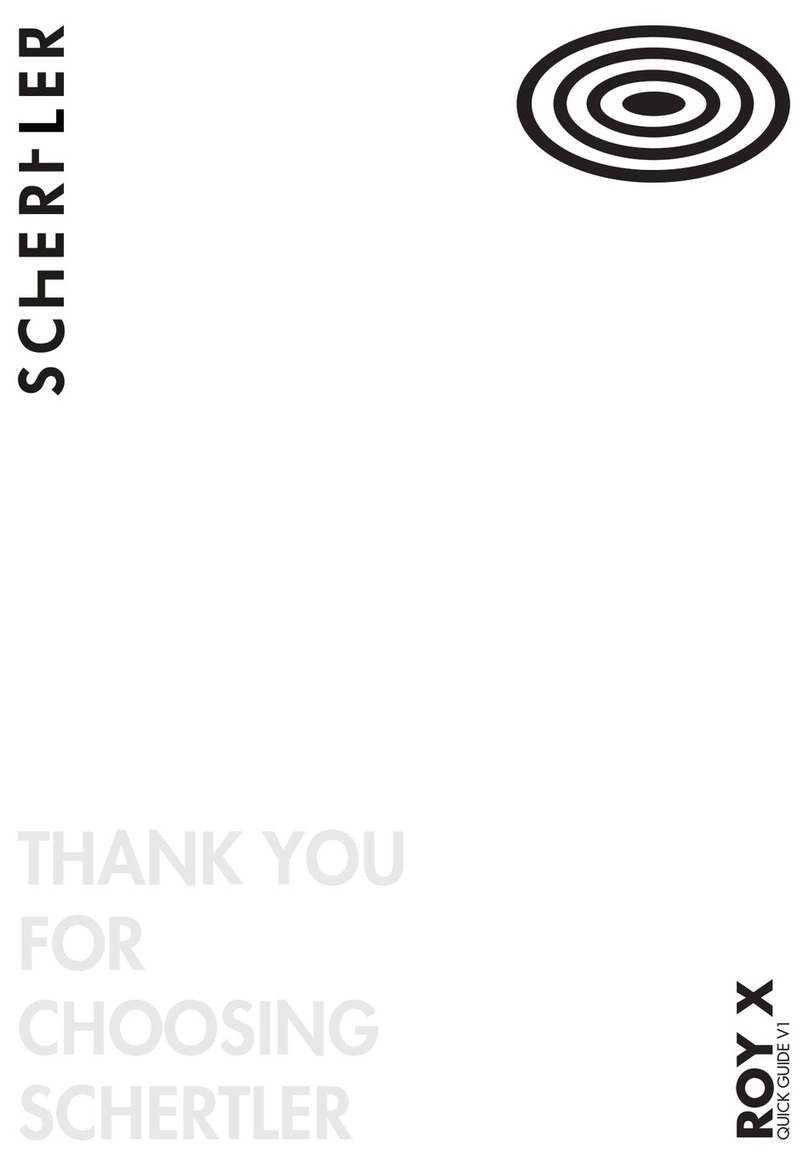
K Series Service Manual Rev A.
1-2 Introduction
©1999 Crown International, Inc.
1.3 Repair Strategy
The
Balanced Current Amplifier
technology rings in a
new era in Crown history. Taking full advantage of the
modular design approach used in the design of
K Se-
ries
amplifiers,weareable to offeramoduleexchange
programforthisproduct.The concept is that thePWA
(Printed Wire Assembly) as a whole is one compo-
nent, and when a part of the assembly is defective,
the whole assembly is defective. Exceptions are the
Control, Bridge, Display, and Line Filter PWAs. Those
PWAs may be repaired at the component level unless
there is sufficient damage or malfunction to warrant
PWA replacement.Non-PWAcomponentsarealsoex-
cluded from this program.
Under the module exchange program, defective
PWAs are returned to Crown for evaluation and re-
work. The reworked assemblies will then be stocked
in the Crown Parts Department to be sold as refur-
bished parts.
This strategy offers several advantages. One advan-
tage is less time spent in troubleshooting and repair-
ing the amplifier, thus resulting in greater customer
satisfaction. This strategy also allows Crown to col-
lect the necessary information from amplifier failures,
soimprovementscanbe made for even greater prod-
uct reliability.
1.4 Service Procedure
Servicing a
Balanced Current Amplifier
requires cer-
tain steps to be followed. See Figure 1.2 for a flow
chart of these steps. It is important that the defective
PrintedWireAssemblies(PWAs)bereturnedtoCrown
forevaluationandrepair. Under the module exchange
program, warranty claims for PWA replacement will
not be honored unless the defective PWA accompa-
nies the warranty claim. In the event of a non-war-
ranty repair, rebuilt PWAs will be available at a lower
price than new PWAs, and a discount will be given if
the defective PWA is returned to Crown.
Each PWA purchased from the Crown parts depart-
ment will have a tag indicating that it is “Available for
Issue.” This tag will have two parts. The first part sim-
ply states that the PWA is ready for use. It also has
instructions for the PWA and the serial number of the
module. Once the new PWA is installed, this part is to
be discarded. The second part will be filled out by
the service technician. After it is filled out with data
such as the amplifier serial number and a description
of the failure, it will be attached to the failed PWA.
This part has three copies. The first is for the service
center to keep. Copies 2 and 3 will remain together
for use at Crown.
WARNING
Component-level troubleshooting and repair of
PWAs included in the module exchange program
should not be attempted without expressed autho-
rization from the Crown Audio Service Manager.
Such an attempt, without specialized training and
specialized test equipment,will likely result in sub-
stantial damage to the amplifier. Crown will not
authorize payment of warranty claims in such an
instance.
